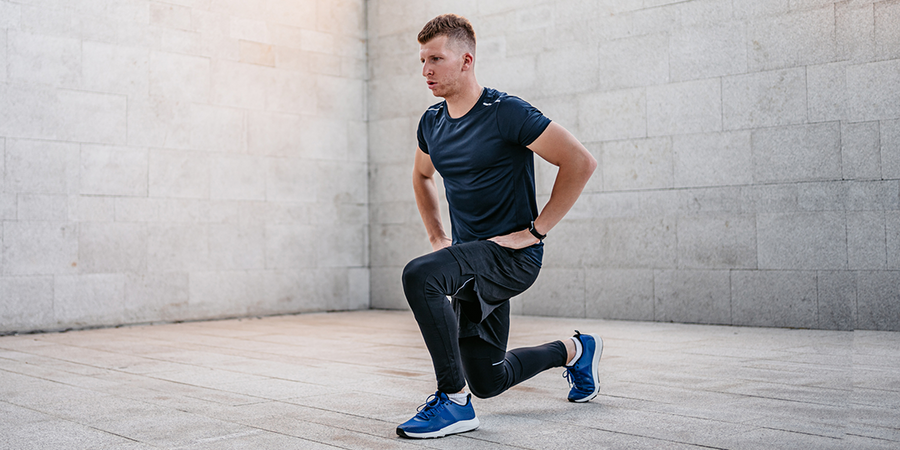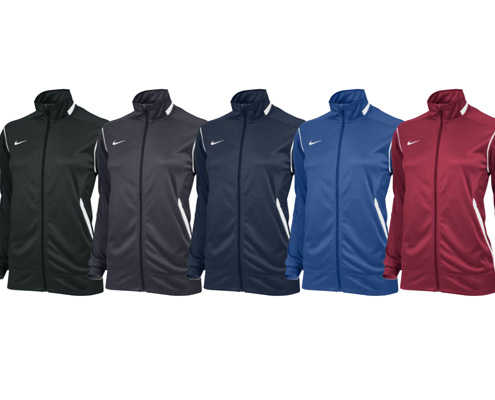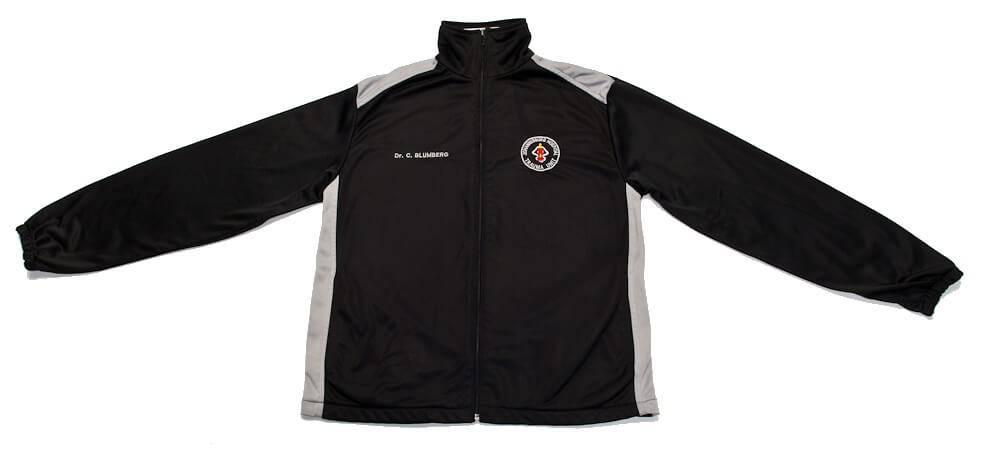Introduction
What Are Warm Ups Clothing – In the world of sports and physical activities, the significance of proper warm-up routines cannot be overstated. Athletes, fitness enthusiasts, and even casual exercisers understand the importance of preparing their bodies before engaging in any rigorous physical activity. While warm-up exercises play a vital role in priming muscles and preventing injuries, another crucial aspect often overlooked is the role of warm-up clothing.

Warm-up clothing, sometimes referred to as activewear or performance apparel, has gained significant recognition in recent years for its ability to enhance athletic performance and provide optimal comfort during workouts. It goes beyond being a mere fashion statement, as these specialized garments are meticulously designed to support the body’s mechanics, regulate temperature, and improve overall performance.
The fundamental purpose of warm-up clothing is to facilitate the warm-up process, promoting increased blood circulation and flexibility. By utilizing high-quality fabrics and cutting-edge technologies, these garments contribute to improved muscle activation and joint mobility. The compression elements integrated into many warm-up clothing items provide a supportive, snug fit that helps reduce muscle fatigue and potential injuries.
Furthermore, warm-up clothing is engineered to effectively manage body temperature and moisture. Innovative fabric technologies wick away sweat from the body, keeping the skin dry and cool. This thermoregulation prevents overheating and allows athletes to maintain optimal comfort, thereby extending their performance capabilities. Additionally, some warm-up clothing even incorporates insulating materials for colder environments, ensuring athletes remain warm and focused during training or competitions.
Another noteworthy aspect of warm-up clothing is its impact on psychological factors that can influence performance. The aesthetics, fit, and functionality of these garments can instill confidence and a sense of professionalism, thus positively influencing an athlete’s mindset. Moreover, the inclusion of reflective elements or visibility-enhancing features in certain warm-up clothing items enhances safety, making them suitable for outdoor activities during low-light conditions.
What is a warm-up suit?
The tracksuit is also known as a warm-up suit, or “warmups” for short, as they are intended for athletes to keep their bodies warm before or after competition, and during breaks (especially important in cold weather).
A warm-up suit, also known as a tracksuit or jogging suit, is a type of clothing typically worn during warm-up exercises or casual athletic activities. It consists of two matching pieces: a jacket or sweatshirt top and a pair of pants or shorts. The primary purpose of a warm-up suit is to provide comfort, flexibility, and warmth to the wearer.
The jacket or sweatshirt is usually made of a lightweight, breathable fabric such as polyester or cotton. It typically features a front zipper or buttons for easy wearing and removal. The pants or shorts are designed to be loose-fitting, allowing freedom of movement during physical activities. Elastic waistbands and drawstrings are commonly incorporated to ensure a secure and adjustable fit.
Warm-up suits are often adorned with brand logos, team names, or decorative stripes along the sides, adding to their sporty and fashionable appearance. They are available in various colors and designs to cater to different preferences and styles.
These suits are popular among athletes, fitness enthusiasts, and individuals seeking comfortable and practical attire for workouts, warm-ups, or casual outings. They provide a layer of insulation, making them suitable for outdoor activities in cooler temperatures. Additionally, the lightweight and flexible nature of warm-up suits make them ideal for stretching, jogging, or engaging in low-impact exercises.
What are warm-up shirts for?
Warm-up gear, such as basketball jerseys, are loose-fitting and allows for adequate movement. It will enable a player to move quickly without restricting movement. Clothing that is tight or ill-fitting affects a player’s range of motion and will affect how well a player performs.
Warm-up shirts serve several purposes and are primarily designed to provide comfort, functionality, and convenience during physical activities. Here are some key reasons why warm-up shirts are used:
Moisture Management: Warm-up shirts are typically made of moisture-wicking fabrics, such as polyester or synthetic blends. These fabrics are designed to pull sweat away from the body, allowing it to evaporate quickly. By keeping the wearer dry, warm-up shirts help regulate body temperature and prevent discomfort caused by excessive sweating.
Warmth and Insulation: As the name suggests, warm-up shirts provide an additional layer of warmth, especially in cooler environments or during warm-up exercises. They offer light insulation to trap body heat, keeping muscles warm and preventing injury.
Flexibility and Range of Motion: Warm-up shirts are designed to allow unrestricted movement. They are usually made with stretchable materials or incorporate features like raglan sleeves or underarm gussets, which enhance flexibility and enable a full range of motion during workouts or warm-up routines.
Identification and Team Unity: In team sports, warm-up shirts often display team names, logos, or colors. They serve as a visual identifier, promoting a sense of unity and camaraderie among teammates. Warm-up shirts can also be customized with individual names and numbers, making them personalized and enhancing team spirit.
Style and Fashion: Warm-up shirts have evolved beyond their functional purposes and are now considered stylish athleisure wear. They come in various designs, colors, and patterns, allowing individuals to express their personal style while staying comfortable and sporty.
What is the purpose of a warm-up jacket?
Wear warm up jackets over your scrubs to keep you warm and cosy at the start or end of your shift.
A warm-up jacket serves multiple purposes and is designed to provide comfort, functionality, and practicality during warm-up exercises or athletic activities. Here are some key reasons why a warm-up jacket is used:
Warmth and Insulation: The primary purpose of a warm-up jacket is to provide an additional layer of warmth. It is typically made from materials such as polyester, fleece, or cotton blends that offer insulation, trapping body heat during cooler temperatures or warm-up routines. The jacket helps to keep the muscles warm and flexible, reducing the risk of injuries.

Moisture Management: Many warm-up jackets are designed with moisture-wicking properties. These jackets are made of breathable fabrics that pull sweat away from the body and allow it to evaporate quickly. By keeping the wearer dry, the jacket helps regulate body temperature and prevents discomfort caused by excessive sweating.
Flexibility and Range of Motion: Warm-up jackets are designed to allow unrestricted movement during physical activities. They are often constructed with stretchable materials or feature ergonomic designs such as raglan sleeves or articulated panels, ensuring optimal flexibility and a full range of motion for the arms and upper body.
Storage and Convenience: Warm-up jackets are often equipped with convenient features such as zippered pockets, which provide storage for small items like keys, phones, or energy bars. These pockets allow athletes and individuals to keep their essentials close at hand during workouts or warm-up sessions.
Team Identification and Unity: In team sports, warm-up jackets often display team names, logos, or colors. They serve as a visual identifier, promoting team unity and a sense of belonging among teammates. Warm-up jackets can also be customized with individual names and numbers, enhancing team spirit and creating a cohesive look.
How do warm clothes work?
Clothing works by holding little pockets and layers of air close to the body. The trapped air is warmed by body heat, which has the effect of lowering the thermal difference (or gradient) between the body and the environment. The result is that heat is lost more slowly.
Warm clothes work by employing several mechanisms to provide insulation and retain heat, ultimately keeping the wearer warm. Here are the key ways in which warm clothes function:
Insulating Materials: Warm clothes are typically made from materials that have good insulating properties, such as wool, down feathers, or synthetic fibers like polyester or fleece. These materials trap air pockets within their fibers, creating a barrier that slows down the transfer of heat from the body to the surrounding environment.
Layering: Layering is an effective technique for enhancing insulation. By wearing multiple layers of clothing, each layer acts as an additional barrier to heat loss. The air trapped between the layers provides insulation, preventing heat from escaping and cold air from penetrating.
Trapping Body Heat: Warm clothes are designed to trap and retain the body’s natural heat. This can be achieved through features like snug-fitting cuffs, collars, and hems that minimize heat loss from exposed areas. Additionally, clothes with high necklines and hoods help to retain heat around the head and neck.
Moisture Management: Warm clothes often incorporate moisture-wicking properties. These fabrics draw sweat away from the body, preventing moisture accumulation that can lead to discomfort and cooling. By keeping the skin dry, warm clothes help to maintain a warm and comfortable environment.
Wind and Water Resistance: Many warm clothes feature windproof and water-resistant or waterproof outer layers. These materials act as barriers, preventing cold air from penetrating and blocking the entry of moisture. By minimizing exposure to external elements, warm clothes help to maintain a warm microclimate around the body.
What are warm-up jackets made of?
Fleece jackets in particular are made up of fleece fabrics that are highly breathable and very comfortable to wear even in strenuous physical activities out of a field or in a gym.
Warm-up jackets are typically made of a variety of materials, each offering different properties and benefits. Here are some common materials used in warm-up jackets:
Polyester: Polyester is a popular choice for warm-up jackets due to its durability, moisture-wicking capabilities, and lightweight nature. It is resistant to shrinking and wrinkling, making it easy to care for. Polyester jackets often have a smooth and shiny appearance.
Fleece: Fleece is a synthetic material known for its excellent insulation and soft texture. It has a fuzzy surface that traps air, providing warmth without being overly heavy. Fleece jackets are highly breathable, quick-drying, and retain heat even when damp. They are commonly used in colder climates or for outdoor activities.
Cotton Blends: Warm-up jackets made from cotton blends offer a combination of comfort, breathability, and moisture absorption. The addition of synthetic fibers like polyester or elastane enhances durability and stretchability, allowing for a better fit and range of motion.
Nylon: Nylon is a lightweight and durable synthetic fabric commonly used in warm-up jackets. It provides wind and water resistance, making it suitable for outdoor activities. Nylon jackets are known for their smooth and shiny appearance and can be easily packed or folded for travel.
Microfiber: Microfiber is a synthetic fabric that is soft, lightweight, and breathable. It provides insulation while allowing moisture to escape, keeping the wearer dry and comfortable. Microfiber jackets are often used in athletic settings due to their moisture-wicking properties and quick-drying nature.
It’s important to note that warm-up jackets can be made from a combination of these materials or incorporate additional features such as mesh panels or moisture-wicking linings for enhanced breathability and performance. The choice of material depends on factors such as climate, intended use, and personal preferences for comfort and functionality.
What are the key benefits of wearing warm-up clothing during physical activities?
Wearing warm-up clothing during physical activities offers a multitude of key benefits that can significantly enhance performance and overall comfort. Here are the main advantages of incorporating warm-up clothing into your exercise routine:
Improved Muscle Activation: Warm-up clothing, often designed with compression features, provides a supportive and snug fit. This compression helps increase blood flow to the muscles, enhancing muscle activation and reducing the risk of strains or injuries. It also promotes better joint stability and range of motion, allowing for more efficient movements.
Enhanced Thermoregulation: Warm-up clothing utilizes advanced fabric technologies that wick away sweat and regulate body temperature. These moisture-wicking properties help keep the body dry, cool, and comfortable during intense workouts by efficiently dissipating heat and allowing air circulation. In colder environments, certain warm-up clothing items may include insulating materials to provide essential warmth.
Optimal Comfort: The materials used in warm-up clothing are often lightweight, flexible, and breathable, ensuring maximum comfort during physical activities. The garments are designed to minimize chafing, irritation, and restrictions, allowing for unrestricted movement and reducing distractions.
Injury Prevention: The supportive nature of warm-up clothing, coupled with its compression elements, aids in reducing muscle oscillation and fatigue. This, in turn, lowers the risk of muscle strains, sprains, and other common exercise-related injuries. Additionally, the improved muscle activation and joint stability offered by warm-up clothing contribute to better overall body mechanics and alignment.
Psychological Confidence: The aesthetics and fit of warm-up clothing can have a positive psychological impact on athletes and fitness enthusiasts. When individuals feel confident in their appearance and gear, it can boost their self-assurance, motivation, and overall performance. The professionalism and sense of preparedness associated with wearing purpose-built warm-up clothing can enhance focus and mindset during physical activities.
How do warm-up clothing items contribute to injury prevention and muscle activation?
Warm-up clothing items play a crucial role in both injury prevention and muscle activation, offering athletes and fitness enthusiasts significant benefits in their physical activities.
Injury Prevention: Warm-up clothing incorporates compression elements that provide a supportive fit around the muscles and joints. This compression helps to stabilize and align the muscles, reducing excessive muscle oscillation during movement. By minimizing muscle vibrations, warm-up clothing reduces the risk of strains, sprains, and other common exercise-related injuries.
Enhanced Blood Circulation: The compression features of warm-up clothing help improve blood circulation to the muscles. Increased blood flow delivers oxygen and nutrients more efficiently, promoting better muscle performance and reducing the risk of muscle fatigue. Adequate blood circulation also aids in the removal of metabolic waste products, such as lactic acid, which can contribute to muscle soreness and fatigue.
Muscle Activation: Warm-up clothing items are designed to fit snugly against the body, creating a gentle compression on the muscles. This compression stimulates proprioceptors (sensory receptors in the muscles, tendons, and joints), enhancing body awareness and muscle activation. Improved muscle activation leads to better control, stability, and coordination during physical activities, reducing the risk of imbalances or compensatory movements that can lead to injuries.
Joint Stability and Range of Motion: Warm-up clothing, particularly those with integrated supportive panels or strategic reinforcements, enhances joint stability. The targeted compression around joints, such as the knees or elbows, helps maintain proper alignment and reduces stress on the joint structures. Additionally, warm-up clothing made from flexible materials allows for a full range of motion, promoting fluid and efficient movements while minimizing the risk of joint injuries.
What are some advanced technologies and fabric features found in modern warm-up clothing?
Modern warm-up clothing incorporates various advanced technologies and fabric features to enhance performance, comfort, and functionality. Here are some notable examples:
Moisture-Wicking Fabrics: Many warm-up clothing items feature moisture-wicking fabrics that efficiently pull sweat away from the skin. These fabrics have specialized properties that quickly absorb moisture and transport it to the outer surface, where it can evaporate. This helps to keep the body dry and cool during intense workouts, preventing discomfort and overheating.
Compression Technology: Compression garments are designed to provide a snug fit, applying consistent pressure to specific muscle groups. The compression helps to improve blood circulation, reduce muscle oscillation, and enhance proprioception. Additionally, compression technology aids in muscle recovery by minimizing muscle soreness and fatigue.
Breathable and Ventilated Panels: Warm-up clothing often incorporates strategically placed breathable and ventilated panels. These panels are designed to allow air circulation, improving breathability and preventing excessive heat buildup. These features contribute to maintaining a comfortable body temperature during physical activities.
Stretch and Flexibility: Modern warm-up clothing is constructed with flexible and stretchable fabrics that allow for a full range of motion. These fabrics are often lightweight and have excellent elasticity, ensuring unrestricted movement while providing a comfortable fit.
Odor Control and Antibacterial Properties: Some warm-up clothing utilizes fabric treatments or technologies that offer odor control and antibacterial properties. These features help to combat the growth of odor-causing bacteria and keep the garment fresh, even during intense workouts.

Reflective Elements: Warm-up clothing designed for outdoor activities may include reflective elements or details. These elements enhance visibility and safety during low-light conditions, ensuring that athletes remain visible to others, such as motorists or pedestrians.
Thermal Regulation: Certain warm-up clothing is designed to provide thermal regulation, especially in colder environments. Insulating materials or fabric layers with heat-trapping properties help to retain body heat, keeping athletes warm without hindering mobility.
How does wearing warm-up clothing enhance thermoregulation and body temperature management?
Wearing warm-up clothing plays a significant role in enhancing thermoregulation and body temperature management during physical activities. Here’s how:
Moisture-Wicking Fabrics: Warm-up clothing often utilizes moisture-wicking fabrics that efficiently draw sweat away from the skin. These fabrics have quick-drying properties that allow moisture to evaporate rapidly, keeping the body dry and preventing discomfort caused by sweat-soaked clothing. By maintaining a dry environment, warm-up clothing helps regulate body temperature.
Breathability: Many warm-up clothing items feature breathable panels or mesh inserts strategically placed in high-heat zones. These panels allow air circulation, promoting ventilation and heat dissipation. The enhanced breathability prevents overheating, reduces sweat accumulation, and helps regulate body temperature throughout physical activities.
Insulating Properties: In colder environments, warm-up clothing may include insulating materials that help retain body heat. These materials trap a layer of warm air close to the body, providing insulation against the cold. By preserving body heat, warm-up clothing prevents excessive heat loss and helps maintain a comfortable body temperature.
Layering Capabilities: Warm-up clothing is often designed to be layered, allowing individuals to adjust their clothing based on environmental conditions and their level of exertion. Layering enables them to add or remove garments to manage body temperature effectively.
By combining moisture-wicking properties, breathability, insulation, and layering capabilities, warm-up clothing helps individuals maintain a balanced body temperature during physical activities. It prevents overheating, excessive sweat accumulation, and heat loss, ensuring optimal comfort and performance in various environmental conditions.
What role does psychological comfort and confidence play when choosing warm-up clothing for athletes and fitness enthusiasts?
Psychological comfort and confidence play a significant role when athletes and fitness enthusiasts choose warm-up clothing. Here’s why:
Mindset and Focus: When individuals feel comfortable and confident in their attire, it positively impacts their mindset and focus. Wearing warm-up clothing that fits well, feels good against the skin, and provides a sense of support can boost self-assurance and mental readiness for physical activities. This psychological comfort helps athletes and fitness enthusiasts maintain a focused and positive mindset, enhancing their overall performance.
Professionalism and Preparedness: The aesthetics and functionality of warm-up clothing contribute to a sense of professionalism and preparedness. Wearing purpose-built, high-quality warm-up gear signals dedication and commitment to one’s sport or fitness goals. This sense of professionalism can instill confidence in athletes, reinforcing their belief in their capabilities and their preparedness for the challenges ahead.
Body Image and Self-Esteem: Warm-up clothing that flatters the body and enhances its natural shape can have a positive impact on body image and self-esteem. When individuals feel good about their appearance, it can boost their self-confidence and improve their overall perception of themselves as athletes or fitness enthusiasts. This confidence translates into improved performance and a more positive exercise experience.
Motivation and Excitement: Choosing warm-up clothing that aligns with personal style and preferences can ignite motivation and excitement for physical activities. When individuals wear clothing that they genuinely enjoy and feel good in, it creates a sense of enthusiasm and anticipation, making workouts or training sessions more enjoyable and engaging. This positive emotional state can lead to increased motivation, consistency, and improved performance.
Conclusion
Warm-up clothing has evolved from being a simple addition to athletic wardrobes to becoming a vital component in optimizing performance and comfort during physical activities. In this discussion, we have explored the multifaceted benefits of warm-up clothing and its impact on athletes and fitness enthusiasts.
By integrating advanced technologies and innovative design elements, warm-up clothing has proven to be more than just apparel. It enhances the warm-up process by promoting increased blood circulation, flexibility, and muscle activation. The compression features aid in reducing muscle fatigue and minimizing the risk of injuries, allowing individuals to push their limits with confidence.
One of the remarkable qualities of warm-up clothing is its ability to manage body temperature and moisture. Through the use of specialized fabrics, these garments effectively wick away sweat, keeping the body cool and dry during intense workouts. In colder environments, insulating materials provide the necessary warmth, ensuring optimal performance even in adverse conditions.

Beyond its functional attributes, warm-up clothing also has psychological benefits. The aesthetics, fit, and functionality of these garments can instill a sense of confidence and professionalism in athletes, boosting their mindset and motivation. Additionally, safety features such as reflective elements enhance visibility during low-light conditions, further contributing to athletes’ overall well-being.
As athletes and fitness enthusiasts strive for peak performance and seek ways to optimize their training routines, warm-up clothing emerges as an invaluable tool. It serves as a bridge between preparation and performance, allowing individuals to unleash their full potential while ensuring maximum comfort and protection.
In the ever-evolving world of sports and fitness, warm-up clothing continues to push boundaries, with manufacturers constantly innovating to meet the diverse needs of athletes. Whether it’s for professional athletes or individuals pursuing personal fitness goals, warm-up clothing has become an essential part of the training process.


